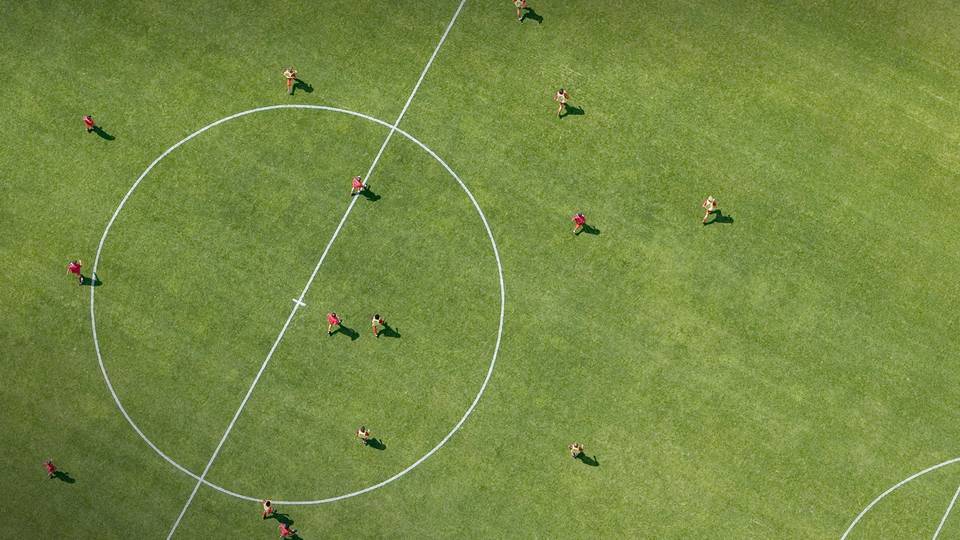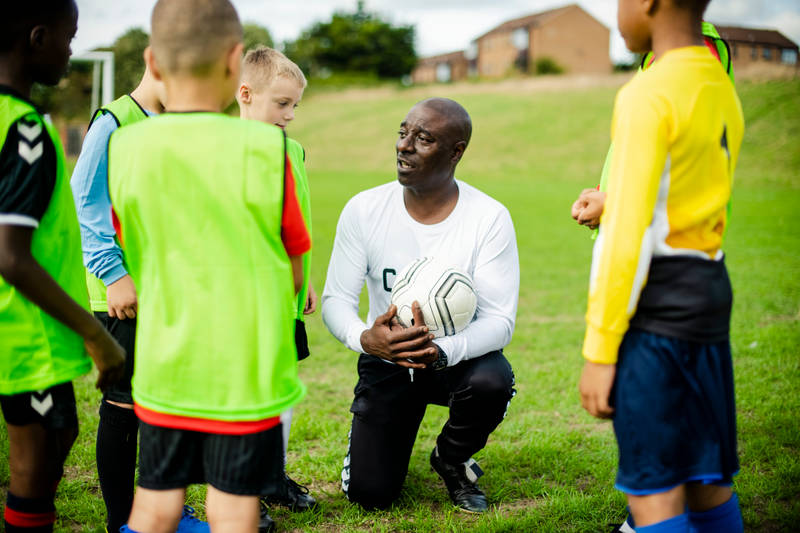Six-a-side football offers a fast-paced, skill-intensive version of the beautiful game that rewards tactical awareness and quick thinking. Whether you're new to the smaller format or looking to sharpen your existing skills, mastering the fundamentals can transform your performance on the compact pitch. The key to excelling in 6-a-side lies in maximizing space usage, employing rapid passing sequences, and developing the agility to exploit momentary defensive lapses.
The dynamics of 6v6 differ significantly from the traditional 11-player format, requiring adaptable formations like the balanced 2-2-1 setup that provides both defensive stability and attacking options. Quick movement and clever positioning become essential when operating in confined spaces, with players needing to constantly create angles for passes and shooting opportunities. Deceptive movement, such as feinting in one direction before doubling back, can create crucial separation from defenders in these tight environments.
Successful teams maintain positional discipline while remaining flexible enough to transition between defence and attack in seconds. Utilizing the full width of the pitch strategically stretches opposition defences, creating valuable central spaces to exploit. In the soccer world, developing this spatial awareness alongside physical agility represents the foundation upon which more advanced 6-a-side techniques can be built, ultimately leading to more goals and victories for your team.
Understanding 6-A-Side Soccer
Six-a-side football is a fast-paced, skill-intensive version of the traditional game that requires specific tactical awareness and technical abilities. It combines elements of the full-sized game with unique dynamics created by the smaller pitch and fewer players.
The Basic Rules and Format
In 6-a-side football, each team fields five outfield players plus one goalkeeper. Matches typically last between 40-60 minutes, usually split into two halves. The pitch dimensions are significantly smaller than 11-a-side, generally around 40m x 30m, with smaller goals.
Rolling substitutions are permitted, allowing players to rotate frequently. This keeps energy levels high throughout the match. There is usually no offside rule, encouraging more attacking play.
Most leagues enforce a "no sliding tackles" rule to reduce injuries on hard surfaces. Kick-ins replace throw-ins, and goalkeepers can't handle backpasses. Teams must retreat a set distance (usually 3-5 metres) for free kicks.
Yellow cards often result in a 2-minute sin bin rather than just a caution. Games move quickly with little stoppage time, maintaining a high intensity throughout.
Key Differences From Standard Soccer
The confined space in 6-a-side creates a fundamentally different tactical approach. Players must be comfortable in multiple positions as rigid formations are less practical. The smaller pitch means less time on the ball, requiring quicker decision-making and sharper technique.
Possession is crucial in 6v6, with short passing and ball retention often proving more effective than long balls. Counter-attacks become particularly potent due to rapid transitions from defence to attack.
The 2-2-1 formation represents a popular tactical setup, functioning as a miniaturised version of the 4-4-2 seen in the full-sized game. This provides balance between defensive solidity and attacking threat.
Players need exceptional spatial awareness, with midfielders particularly required to read the game effectively. Communication becomes even more vital with quick positional adjustments needed constantly.
Stamina demands are different but intense, featuring shorter sprints but fewer recovery periods. This creates a unique physical challenge even for players fit for 11-a-side football.
Essential Skills for 6-A-Side Football
Success in the fast-paced world of 6-a-side football demands a specific set of skills that differ from the traditional 11-a-side game. Players need to be technically proficient and tactically aware as space is limited and decisions must be made quickly.
Ball Handling and Control
Excellent ball control is the foundation of 6-a-side football. In tight spaces, your first touch determines whether you maintain possession or lose the ball to opponents.
Practice receiving the ball with different parts of your foot—inside, outside, and sole—to adapt to various situations. A good first touch should move the ball away from pressure but keep it within your control.
Shielding is crucial in 6-a-side. Position your body between the defender and the ball, using your arms for balance (not pushing) while keeping your centre of gravity low.
Quick turns and changes of direction can create space on compact pitches. Master the drag-back, Cruyff turn, and step-over to navigate crowded areas effectively.
Key drills for improvement:
- Cone dribbling practice (varying speeds)
- One-touch control exercises
- Small-space ball manipulation
- Wall passes with different surfaces
Passing Accuracy
In 6-a-side, passes need to be precise and purposeful. With less space available, inaccurate passes are more likely to be intercepted.
Short, sharp passes are the bread and butter of 6-a-side football. Practice both ground passes and slightly elevated passes that can bypass defenders' feet but remain easily controllable for teammates.
Developing awareness before receiving the ball is essential. Scan the pitch regularly to know your options before the ball arrives.
Weight of pass is particularly important in the 6v6 format. Too soft and the ball gets intercepted; too hard and your teammate struggles to control it.
Passing techniques to master:
- Inside foot pass (for accuracy)
- Outside foot pass (for quick releases)
- Disguised passes (using eyes to look elsewhere)
- One-touch passes (to maintain flow)
Shooting Techniques
Shooting in 6-a-side requires both power and placement. Goals are typically smaller, making accuracy more important than in the 11-a-side game.
Low, driven shots are highly effective as they're difficult for goalkeepers to reach in small goals. Practice striking the ball with your laces while keeping the shot below waist height.
Composure is vital when shooting opportunities arise. Rushed shots rarely find the target, so take the split-second needed to pick your spot.
The toe-poke is an underrated technique in small-sided games. It allows for quick release when there's little time to set yourself properly.
Shooting drills to incorporate:
- Finishes from various angles
- Quick-fire shots after turning
- First-time finishes
- Shooting under pressure
Agile Defending
Defending in 6-a-side football is an active, mobile task. Unlike 11-a-side soccer, you can't rely on additional defenders to cover spaces.
Patient defending is crucial. Avoid diving into tackles; instead, jockey attackers and force them into areas where they have fewer options. This containment approach works well in small-sided formats.
Communication with teammates is essential. Call out unmarked players and coordinate pressing to avoid being pulled out of position.
Transitioning quickly from defence to attack is a key skill. After winning the ball, look to play forward immediately to catch opponents before they can reorganise.
Defensive principles:
- Stay on your feet whenever possible
- Maintain a low centre of gravity
- Use your body position to show attackers away from goal
- Press as a unit rather than individually
Effective 6-A-Side Strategies and Tactics
Success in 6-a-side football depends on understanding the unique dynamics of the smaller pitch and implementing appropriate tactical approaches. The right formation and balanced attacking and defending principles can give your team a significant competitive advantage.
Formations and Playing Styles
The 2-2-1 formation provides an excellent starting point for most 6-a-side teams. This setup mimics the traditional 4-4-2 formation from 11-a-side but scaled appropriately for the smaller pitch. It offers balanced coverage across the playing area.
Alternative formations include:
- 2-3-0: Suitable for possession-based teams focusing on midfield control
- 2-1-2: Offers attacking width while maintaining defensive security
- 3-1-1: Provides solid defensive structure for counter-attacking play
Player movement is crucial on smaller pitches. Encourage constant rotation and creating passing angles to overcome tight spaces. Players should be comfortable in multiple positions.
Training drills that emphasise quick transitions between attacking and defending phases help teams adapt to the rapid nature of 6-a-side. Focus on developing agility and quick decision-making through small-sided games in practice.
Offensive and Defensive Approaches
When attacking in 6-a-side, prioritise movement over static positioning. Players without the ball should make runs horizontally and vertically to create passing options and disrupt the opposition's defensive shape.
Offensive principles:
- Use the goalkeeper effectively as an extra outfield player
- Employ quick one-two passing combinations
- Prioritise precision shooting over power in tight spaces
- Create numerical overloads in attacking positions
Defensively, 6v6 football requires disciplined positioning and communication. Compact defending with appropriate distance between defenders prevents easy penetration through your defensive structure.
Transition moments often determine success in the small-sided game. Train players to react immediately after possession changes. Effective coaching should emphasise the importance of both individual defensive responsibility and collective shape.
Fostering mutual respect within the team creates an environment where constructive feedback can improve tactical understanding. Players who understand their roles within the team's strategy typically perform better in both attacking and defensive phases.
Building a Cohesive 6-A-Side Team
Creating a successful 6-a-side team requires thoughtful planning, strong relationships, and consistent development. Team cohesion doesn't happen by accident—it's built through careful selection of players, nurturing positive relationships, and implementing targeted coaching strategies.
Team Selection and Roles
When assembling your 6-a-side squad, prioritise versatility and complementary skills. Each player should understand their primary role while being comfortable adapting when necessary. A balanced team typically includes:
- 1 goalkeeper with good distribution skills
- 1-2 defensively-minded players
- 2-3 all-rounders who can transition between attack and defence
- 1 attack-focused player with finishing ability
The 2-2-1 formation (two defenders, two midfielders, one forward) provides a solid structure for most 6v6 matches. However, player roles should be fluid, with everyone contributing to both attacking and defensive phases.
Consider physical attributes alongside technical ability. In the confined space of small-sided football, quick reactions and close control often outweigh raw speed or power.
Importance of Team Chemistry
Team chemistry is perhaps more crucial in 6-a-side than in full-sized matches. With fewer players, each individual's attitude and relationship with teammates has a magnified impact on performance.
Regular social activities outside of matches can strengthen bonds between players. Something as simple as a post-match drink or team meal creates shared experiences that translate to better on-pitch understanding.
Communication is vital during play. Encourage players to give positive, constructive guidance to teammates rather than criticism. This builds trust and confidence within the group.
Consistent team selection also helps develop intuitive understanding between players. While rotation is sometimes necessary, maintaining a core group allows partnerships to form across the pitch.
Coaching Tips for Team Improvement
Effective coaching for 6-a-side focuses on specific skills that translate to the small-sided format. Design training sessions that emphasise quick decision-making and spatial awareness.
Key training elements to include:
- Small possession exercises (3v1, 4v2)
- One-touch finishing drills
- Transition play (attack to defence and vice versa)
- Set-piece routines
Video analysis, even using basic smartphone footage, provides valuable insights. Review matches together as a team, highlighting both successful patterns and areas for improvement.
Foster a culture of Respect among your players—toward opponents, officials, and each other. Adult members of the team should model positive behaviour for younger players.
Allow time for experimentation during training. The compact nature of soccer at this level rewards creative solutions and innovative tactics that players discover through guided practice.












